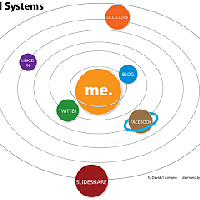Home
About Us
Page 2
a) The development of novel non-traditional physical and engineering sciences based approaches, materials, or platforms to thoroughly comprehend cancer disorders.
|
|
b) The generation of unique sets of physical measurements that are capable of providing insight into molecular mechanisms of oncogenesis, metastasis, drug resistance or other aspects of cancer that could potentially lead to a more effective treatment of the disease.
c) The development and evaluation of theoretical approaches that would provide a comprehensive and dynamic understanding of cancer disorders.
The NSF estimates that it would award 5 to 10 grants to different applicants, with each grant amounting to $2,000,000 to $3,000,000.
The institutions and organizations that will be considered eligible to submit an application for the Physical and Engineering Sciences in Oncology Program are the following:
a) Universities and two- and four-year colleges including community colleges that are located in the United States
b) Non-profit, non-academic organizations such as Independent museums, observatories, research laboratories and professional societies
c) For-profit organizations
d) State, Local, City and Township Governments
e) Unaffiliated Individuals such as Scientists, engineers or educators
f) Foreign organizations
g) Other Federal agencies.
Physical and Engineering Sciences in Oncology
Back to Page 1
About The Author Michael Saunders is an editor of TopGovernmentGrants.com one the the most comprehensive Websites offering information on government grants and federal government programs. He also maintains Websites providing resources on community grants and health grants. |
Additional Resources
category - Health Grants
Small Business Innovation Research Phase IIB Bridge Awards
Strategic Alliances for Medications Development to Treat Substance Use Disorder Program
Behavioral Interventions to Address Multiple Chronic Health Conditions in Primary Care Program
Planning Grants for Hubs of Interdisciplinary Research and Training in Global Environmental and Occupational Health Project
Follow @topgovtgrant
Social Entrepreneurship
Spotlight
Social Enterprise Version 2.0

Midsize businesses are tapping into the social business market because large companies do not need the help of start-ups to create a “social technology stack.” But a social business stack cannot generate revenue by itself.
